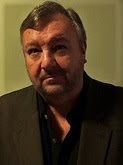The Washington Times ran my On Crime column on a
collection of Ernest Hemingway’s novels, short stories and letters.
You can read the column via the link below or the text below:
A fine collection of Hemingway's novels, short stories and letters - Washington Times
I’ve been an Ernest Hemingway aficionado since my teens, so I was pleased to read the Library of America’s collection of the late, great writer’s stories, “Hemingway: A Farewell To Arms & Other Writings 1927-1932.”
The Library of America, a nonprofit organization,
champions our nation’s cultural heritage by publishing America’s greatest
writing in new editions. “No twentieth-century writer had a greater influence
on American fiction than Ernest Hemingway,” The Library of America writes. “This volume,
the second in Library of America’s definitive edition
of Hemingway’s works, brings together Men
Without Women, A Farewell to Arms, and Death in the Afternoon, the three books
that followed his groundbreaking debut novel, ’The Sun Also Rises,’ and
solidified his status as a preeminent literary modernist.
“The appearance of “Men Without Women” (1927) confirmed Hemingway’s determination to leave his
mark on the short story form. It comprises fourteen spare and unsparing stories
about wounded soldiers, boxers, and bullfighters, each displaying the
extraordinary economy of language that is the hallmark of his prose.”
While Hemingway is mostly known for writing
about war, bullfighting, hunting and fishing, he also wrote what I believe are
two of the best crime short stories ever written, “The Killers” and “Fifty
Grand.” Both short stories, which are about boxers and crooks, are included in
this collection.
The killers in “The Killers” are mob hit men who show up at a
diner late one night where Hemingway’s autobiographical character,
young Nick Adams, is working. He overhears the two hoodlums discussing their
plans to murder the boxer.
Some years ago, I read “Ellery Queen’s Book of Mystery Stories.”
The crime stories in this collection were written by writers who were not
generally recognized as crime, mystery, or thriller writers.
Edited by Ellery Queen, the pseudonym of the writing team of
Frederic Dannay and James Yaffe, and the name of their fictional detective
character, the book offered crime stories by Mark Twain, Charles Dickens,
Robert Louis Stevenson and a dozen other writers. Ernest Hemingway’s “The
Killers” is also included in the collection.
“Ernest Hemingway’s “The Killers” is one of the best-known short
stories ever written, and no volume dedicated to the literature of crime would
be complete without it,” the editors wrote in the introduction to the story.
“It is revealing nothing new about Hemingway to point out that essentially,
he is preoccupied with doom - more specifically, with death. It has been
explained this way: ‘The I in Hemingway’s stories is the man that
things are done to’ - and the final thing that is done to him, as to all of us,
is death. No story of Hemingway illustrates this fundamental
thesis more clearly than ’The Killers,’ nor does any story of Hemingway illustrate more clearly why he
is a legend in his own lifetime. Here, in a few pages, is the justly
famous Hemingway dialogue - terse, clipped, the
quintessence of realistic speech; here in a few pages, are more than the
foreshadowing of the great literary qualities to be found in ’A Farewell to
Arms” and “For Whom the Bell Tolls.’”
In “Fifty Grand,” Hemingway’s story is about Jack Brennan,
an over-the-hill fighter. Jack Brennan is visited at his training camp by two
flashy men described as “wise guy” pool hall owners. The men, Steinfelt and
Morgan, called “big operators,” want the boxer to throw the fight as they have
big money on his opponent. Jack Brennan, who thinks he will lose the fight
anyway, bets 50 grand on his opponent to win.
Hemingway, a noted amateur boxer, was a huge
boxing fan. He knew the sport and the parasitic crooks who clung to the
fighters like remoras to sharks.
A good companion to the Library of America’s Hemingway book is the Cambridge
University Press’s “The Letters of Ernest Hemingway 1934-1936.”
In her introduction to the volume, Dr. Verna Kale, associate
editor of the Hemingway Letters Project, wrote, “The Letters
of Ernest Hemingway: Volume 6 (1934–1936) is a
book about fish. It is about other things as well, of course: writing and art,
friendship and fatherhood, the ongoing Great Depression and the rising threat
of fascism in Europe. And fish — so many fish.”
The Hemingway letters cover the publication
of Hemingway’s experimental nonfiction book
“Green Hills of Africa” and his work on short stories, his twenty-plus pieces
in Esquire magazine and his view of other writers.
Paul Davis’ On Crime column covers true crime, crime fiction
and thrillers.
Hemingway: A
Farewell To Arms & Other writings. 1927-1932
Edited by Robert W.
Trogdon
Library of America, $32, 1037 pages
The Letters of Ernest Hemingway 1934-1936
Edited by Sandra
Spanier, Verna Kale and Miriam B. Mandal
Cambridge University Press, $45, 700 pages





No comments:
Post a Comment